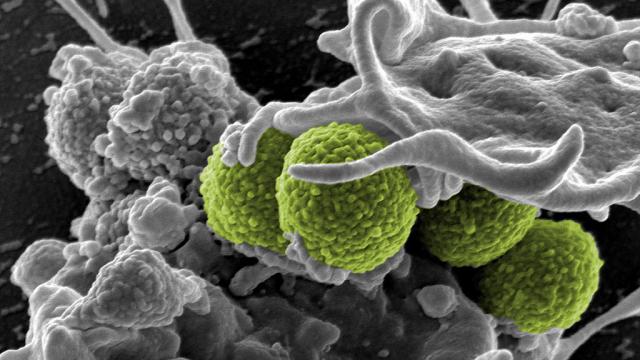Image: NIH NIAID/Flickr
Cells, they’re all different. Even two similar-looking cells that are supposed to work together in the same tissue might express completely different traits, and make different proteins. So how do you make left and right of it all?
Being able to quickly classify lots of cells quick and efficiently has been a difficult task, and previous methods have required looking at one cell at a time, according to a University of Washington press release. But a team of UW researchers have devised a method to quickly and cheaply determine subtle differences between the different types of cells in an organism. They have only tested it on worms, but it could one day be used for bigger things.
The researchers think, for example, that scientists could use their method to create an atlas “to define the molecular state of every cell throughout the life cycle of C. elegans,” they write in the paper published today in the journal Science. But, with scaling, other organisms — like humans — might come next. Understanding all of the cell types could help researchers better understand human development down to its most basic level, how the cells differentiate and how that differentiation changes over time. Importantly, it could also help scientists understand why this process sometimes goes wrong, and how we might be able to fix it.
Every cell has a transcriptome, or its own list of special messenger genetic material known as mRNA. The job of mRNA is to read the DNA, create a copy of the instructions, and bring the copy to the protein factory. If DNA is a roll of film, then the transcriptome is the sum of all of the negatives (the mRNA) for the photos the cell actually wants.
The new method is called sci-RNA-seq. The researchers put the cells into a small, rectangular matrix of compartments, each with special tags that attach to the RNA. After a few iterations of the process, each cell produces a unique set of tags that the researchers can use to tell them apart.
Once the researchers felt they could confidently sort human and mouse cells, they moved on to the popular C. elegans worm, which has smaller cells and less mRNA than humans. After sequencing around a thousand cells, they found 27 cell types, and could drill down to even finer levels of classifications, based on what the mRNA was doing. They found 40 categories of brain cells, for example.
The method itself, as of today, only sequences around 40,000 cells simultaneously. But the researchers hope to one day move to “more than 10 million cells per experiment,” and maybe one day could make an enormous atlas of the bounty of human cells.
One researcher not involved with the study, David M. Miller from Vanderbilt University, told the NY Times that the new method could speed up the process and lower the cost substantially. But there are limitations and a lot of remaining work. As the New York Times reports, the researchers couldn’t find some of the previously documented C. elegans brain cell types. And obviously, with their 37 trillion cells, humans are certainly a bigger challenge than a dinky worm.
As far as bragworthy tomes for your personal library, an encyclopedia of all of the human cells would certainly take the title of “best.” Or certainly, uh, most specific.
[Science]
